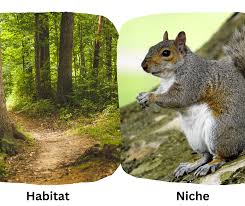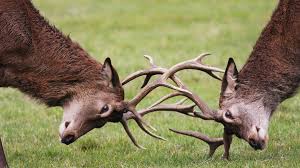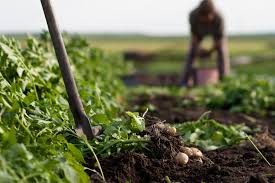Fundamentally, ecology resembles a society, though it operates on a much larger scale. Ecologists function similarly to economists, but instead of human economies, they study nature’s economy.
This article explores ecology across three fundamental scales: population, community, and ecosystem. These scales are interconnected, each serving as the foundation for the next, culminating in the biosphere the most dynamic and diverse living system on Earth.
Understanding Ecological Communities in Agriculture
An ecological community consists of all interacting populations within a specific area. For example, a coral reef hosts diverse populations of fish, crustaceans, and corals, all interacting within the same habitat. At this level, ecologists examine how relationships like predation and competition influence community structure and evolution.
Community Composition and Diversity in Farming Systems
Communities differ based on two key characteristics: composition and diversity.
1. Composition refers to the list of species present.
2. Diversity goes deeper, assessing both species richness (number of species) and evenness (relative abundance of each species).
Species Distribution and Environmental Tolerance in Crops
A species’ range depends on its tolerance for abiotic factors such as temperature, light, water availability, and salinity. Plotting survival and reproduction across environmental gradients produces a bell-shaped curve. Overlapping ranges of multiple species form a community.
While the tolerance model explains community structure based on abiotic factors, the interactive model incorporates biotic interactions (e.g., competition, predation). Further reading on these models is recommended for deeper understanding.
Read Also: What Kind Of Plastics Can Be Recycled?
Habitat and Ecological Niche in Agricultural Ecosystems

Just as every organism has a role, each species occupies a unique spatial and functional position in its community.
1. Habitat: The physical environment where an organism lives and reproduces.
2. Ecological niche: The organism’s functional role, including resource needs and interactions.
Ecologists distinguish between:
1. Fundamental niche: The full range of conditions where a species can survive.
2. Realized niche: The actual conditions where it exists in nature, shaped by competition and predation.
Species Interactions in Farming Environments
Interactions such as competition, predation, and symbiosis integrate species into dynamic systems.
Types of Species Interactions in Agriculture
| Interaction | Expected Outcome |
|---|---|
| Competition | Both species decrease |
| Predation | Predator increases, prey decreases |
| Parasitism | Parasite increases, host decreases |
| Commensalism | One benefits, the other is unaffected |
| Mutualism | Both species benefit |
1. Competition reduces population growth for both species.
2. Predation and parasitism benefit one species at the expense of another.
3. Commensalism benefits one without harming the other.
4. Mutualism enhances survival for both species.
Read Also:Tomatoes Farming: 9 Factors that Hinders High Yield for Profit
Competition Among Animals Populations

1. Interspecific competition occurs when species vie for limited resources (light, nutrients, space). Possible outcomes include:
2. Extinction of the weaker competitor.
3. Niche partitioning, where species adapt to reduce competition.
Example: Galapagos finches exhibit character displacement beak sizes diverge when species coexist, reducing competition for seeds.
Predator-Prey Dynamics in Crop Protection
Predators (e.g., lions, herbivores) regulate prey populations, creating cyclical fluctuations. Key observations:
- Predator populations lag behind prey.
- Prey defenses (e.g., camouflage, toxins) influence dynamics.
Symbiotic Relationships in Sustainable Farming
Symbiosis involves close, long-term interactions:
- Parasitism: Harmful to the host (e.g., mistletoe, crop fungi).
- Commensalism: One benefits without affecting the other (e.g., barnacles on whales).
- Mutualism: Both benefit (e.g., nitrogen-fixing bacteria in legumes).
Ecosystem Dynamics in Agricultural Landscapes
An ecosystem includes biotic (living) and abiotic (non-living) components, emphasizing energy flow and nutrient cycling.
1. Abiotic Factors Affecting Crop Growth
Key abiotic components:
i. Water: Essential for plant survival (hydrophytes, mesophytes, xerophytes).
ii. Soil: Provides nutrients and physical support.
iii. Light: Drives photosynthesis.
iv. Temperature: Must remain within tolerable ranges.
Example: Desert plants (xerophytes) adapt via thick cuticles and water-storage tissues.
2. Biotic Components: Producers and Consumers in Farming
a. Autotrophs (Producers):
i. Photoautotrophs: Plants, algae (photosynthesis).
ii. Chemoautotrophs: Bacteria (oxidize inorganic compounds).
b. Heterotrophs (Consumers):
i. Herbivores: Graze on plants.
ii. Carnivores: Feed on other animals.
iii. Detritivores: Decompose organic matter (e.g., earthworms, fungi).
Energy Flow in Agricultural Ecosystems
Energy originates from the sun, moving through:
- Producers (plants) via photosynthesis.
- Consumers (herbivores, carnivores).
- Decomposers, recycling nutrients.
Only ~10% of energy transfers between trophic levels due to metabolic losses.
1. Primary and Secondary Productivity in Crop Systems
i. Primary Productivity: Organic matter produced by plants.
ii. Gross Primary Productivity (GPP): Total energy fixed.
iii. Net Primary Productivity (NPP): Energy available for consumers.
iv. Secondary Productivity: Biomass accumulation by consumers.
Example: Tropical forests yield 1500–3000 g/m²/year, while deserts produce ~200 g/m²/year.
2. Food Webs and Trophic Levels in Agriculture
i. Grazing Food Web: Begins with plants (e.g., phytoplankton → krill → fish).
ii. Detrital Food Web: Based on decomposers (e.g., fungi → detritivores).
Trophic levels form an ecological pyramid:
- Producers (plants).
- Primary Consumers (herbivores).
- Secondary Consumers*(carnivores).
- Tertiary Consumers (top predators).
iii. Energy efficiency: Only ~10% transfers between levels, explaining why top predators are rare.
Do you have any questions, suggestions, or contributions? If so, please feel free to use the comment box below to share your thoughts. We also encourage you to kindly share this information with others who might benefit from it. Since we can’t reach everyone at once, we truly appreciate your help in spreading the word. Thank you so much for your support and for sharing!

